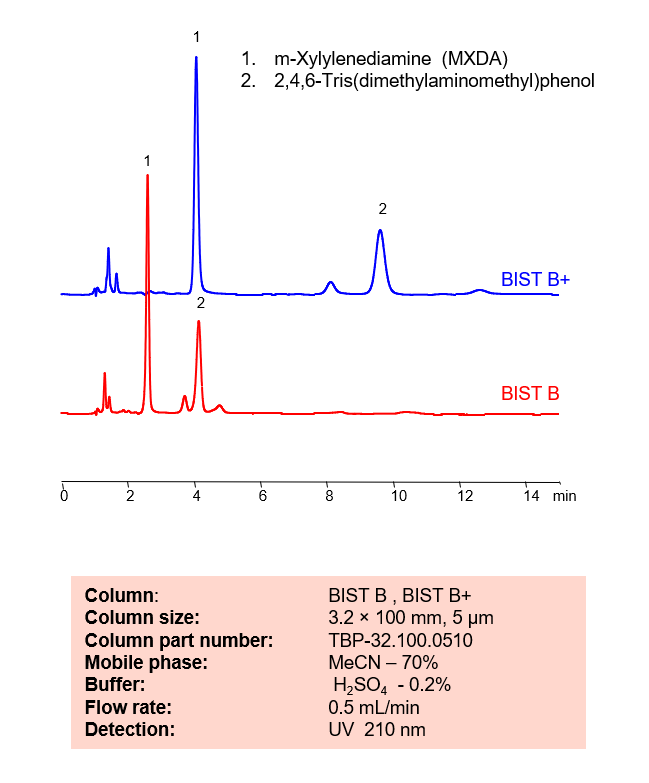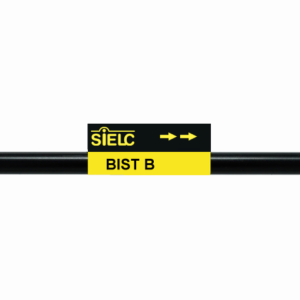HPLC Method for Separation of Amines on BIST B and BIST B+ Columns by SIELC Technologies
Separation type: Bridge Ion Separation Technology, or BIST™ by SIELC Technologies

m-Xylylenediamine (MXDA) is a popular curing agent used on epoxy resins. 2,4,6-Tris(dimethylaminomethyl)phenol is another amine-based curing agent used on epoxy resins. Using SIELC’s newly introduced BIST™ method, these amines can be retained and separated on a positively charged, anion-exchange BIST™ B or BIST™ B+ column. The surface chemistry of BIST™ B+ columns are designed to have stronger ionic retention capabilities, resulting in the marked increase in retention compared to BIST™ B columns.
There are two keys to this retention method: 1) a multi-charged, negative buffer, such as Sulfuric acid (H2SO4), which acts as a bridge, linking the positively charged dipeptide to the positively charged column surface and 2) a mobile phase consisting mostly of organic solvent (such as MeCN) to minimize the formation of a solvation layer around the charged analytes. Using this new and unique analysis method, these two amines can be UV detected at 210 nm.
High Performance Liquid Chromatography (HPLC) Method for Analysis of Amines
Condition
| Column | BIST B, 3.2 x 100 mm, 5 µm, 100 A, dual ended |
| Mobile Phase | MeCN – 70% |
| Buffer | H2SO4 – 0.2% |
| Flow Rate | 0.5 ml/min |
| Detection | UV 210 nm |
| Peak Retention Time |
Description
| Class of Compounds | Amines |
| Analyzing Compounds | m-Xylylenediamine, 2,4,6-Tris(dimethylaminomethyl)phenol |
Application Column
BIST B
Column Diameter: 3.2 mm
Column Length: 100 mm
Particle Size: 5 µm
Pore Size: 100 A
Column options: dual ended
BIST B+
Column Diameter: 3.2 mm
Column Length: 100 mm
Particle Size: 5 µm
Pore Size: 100 A
Column options: dual ended
m-Xylylenediamine






